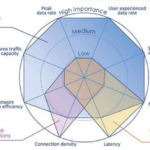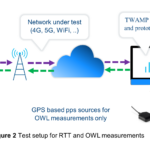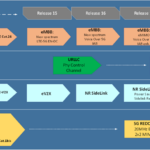Wireless connections are convenient and cheap to set up, but Wi-Fi, Bluetooth, and other commercially available technologies do not always have the range needed. Wireless cellular is an option, but cellular connections are expensive. A lot of devices use 2G and 3G cellular technologies because they cost less, especially when only little chunks of data are needed every now and then. A light-rail stop might have a digital sign schedule showing the expected arrival times, reflecting the occasional out-of-service notification. A 2G or 3G connection is sufficient, but they might not be around for long.
IoT device and module makers may need to pay attention to global support for 2G or 3G. Both 2G and 3G networks are slower than 4G, with existing infrastructure that costs than LTE 4G. These make 2G and 3G good candidates for IoT. 2G networks can deliver from 0.50 to 1.9 Megabits per second (Mbps), depending on the provider, whereas a 3G network ranges from 14 to 168 Mbps. IoT devices vary in data rate requirements based on requirements of latency, reception range, the number of data transmissions the IoT device needs to send in a given amount of time, and even on how fast an IoT device is physically traveling.
Most carriers don’t want to maintain a 2G or 3G infrastructure because traffic has steadily decreased, along with users. It’s not cost-effective for the cellular carriers to keep the networks running when the highest volume of users is advancing towards 5G. Many 2G networks have been shut down, with minimal support for 2G, such as 2G spectrum support running in the guard-bands of some LTE services. AT&T completely shut down its remaining 2G services in 2017. All of the 2G networks in Australia are gone. Some companies have indicated they want to support 2G while shutting down 3G. 2G is no longer supported in Australia, Japan, Singapore, Taiwan, and in much of the U.S. Verizon plans to shut down 2G and 3G networks by the end of 2019. Vodaphone has indicated an interest to keep 2G in Europe until 2025. British Telecommunications (BT) has indicated a desire to switch off their 3G network in 2022, and has already farmed out some 3G spectrum for 4G service. However, BT ultimately sees the coexistence of 2G and 4G. Clearly, 2G and 3G connectivity is not a good bet for your latest IoT design, long-term.
Crossing the chasm
All is not lost, however. Carrier support for a new guard-band network for IoT and Machine-to-Machine (M2M) communication is on the way. The new Narrowband Internet of Things (NB-IoT) service, based on 4G, has been a collaboration of several companies. Verizon and Ericsson successfully completed a data session over the NB-IoT. NB-IoT Guard band is meant for applications that need data rates below 100 kbps. The NB-IoT Guard band uses a dedicated bandwidth at 180 kHz that’s designated just for IoT applications, and does not share spectrum with higher volume traffic, such as smartphones.
According to a press release from Ericsson, “Nationwide deployment of Verizon’s Narrowband IoT Guard band network will be fully complete across Verizon’s nationwide network covering 2.56 million square miles in 2018.”
The NB-IoT guard band is not the only possibility, either. Another Low Power Wide Area (LPWA) cellular technology, CAT-M (a.k.a. LTE-M), is also expanding globally. Crossing the IoT connectivity chasm with cellular has been somewhat arduous for the last 2 years, since choices have been dictated by which service was available for a local area.
Many North American carriers have begun support for LTE-M, whereas China has been rolling out support for NB-IoT. LPWA options in Europe are mixed. Mobile IoT such as wearables would have to support both technologies. Developers may still be buying a module that supports both LPWA options (NB-IoT and LTE-M) and 2G as a fallback. At least there are options, however, over the dubious future of 2G and 3G support. The migration of technology for cellular IoT service has been a bit of a headache for global IoT solutions providers.
Before you start to think about technology wars such as VHS vs. Betamax, however, Ecrisson believes that by 2019 operators will no longer have to decide between the two because coverage for both NB-IoT and LTE-M will geographically overlap as carriers gain the infrastructure and capability to enable both. The 4G-based LPWA technologies will not be phased out with the rollout of 5G, but they may evolve with 5G, as the standards may gain insertions to accommodate 5G in future.




